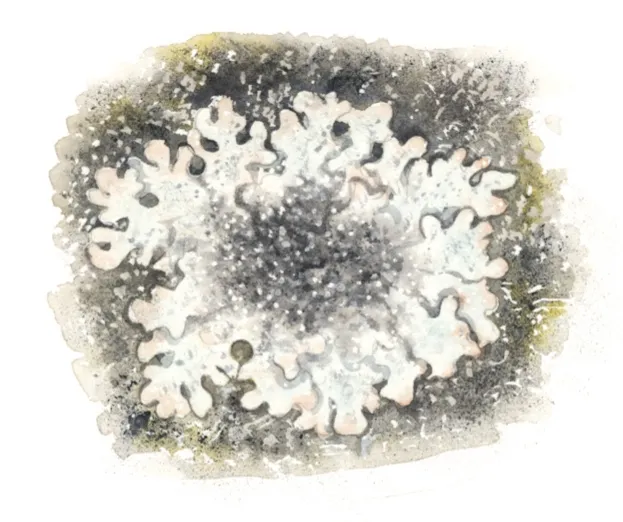All illustrations by Felicity Rose Cole
Red underwing moth (Catocala nupta
Wingspan: 65–75mm. Large, well- camouflaged moth; when disturbed flashes red-and-black underwings.
Common carpet moth (Epirrhoe alternata)
Wingspan: 20–25mm. Small moth with cryptic markings; wings have a dark central band with pale borders.
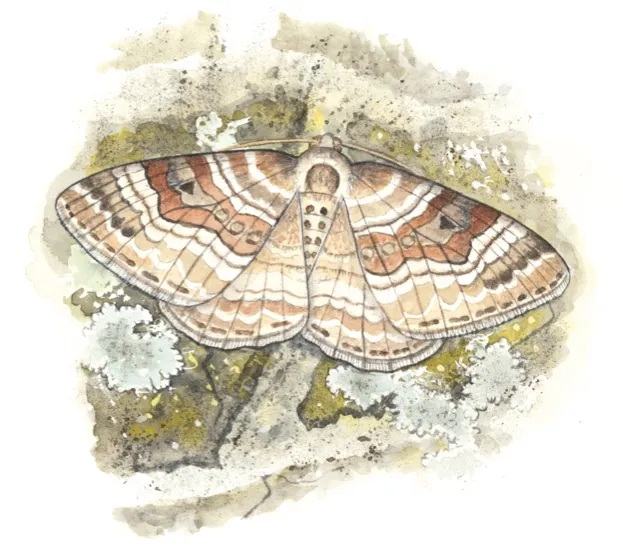
Marbled green moth (Cryphia muralis)
Wingspan: 27–34mm. Small moth, camouflaged in greys and greens to blend in with lichens, its larval food.
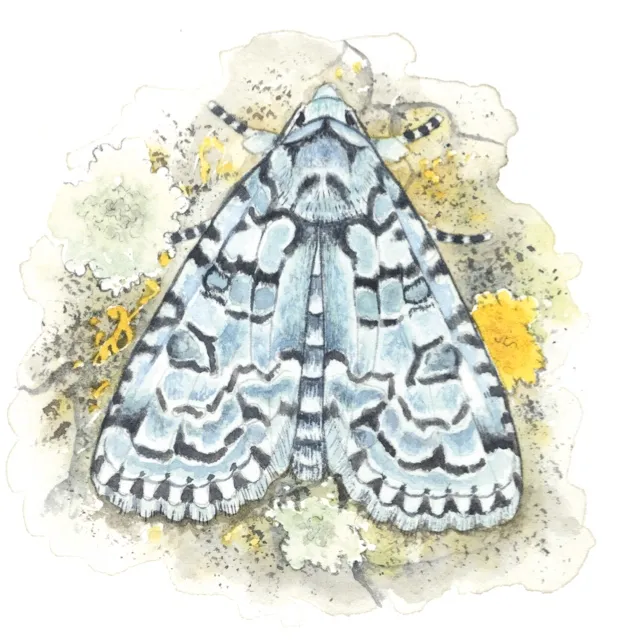
Brown-lipped snail (Cepaea nemoralis)
Variable patterning, but usually yellowish and brown. Always has a dark edge to shell’s inner opening.
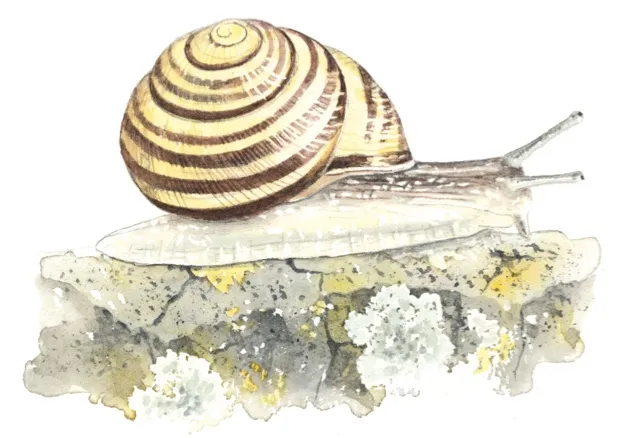
Lace weaver spider (Amaurobius similis)
Body: up to 10mm (female); glossy brown, velvety abdomen. Lacy web surrounds its crevice hideaway.
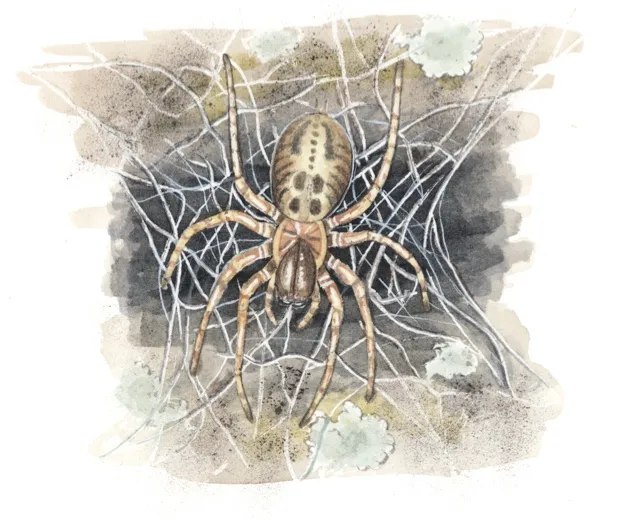
Tube-web spider (Segestria florentina)
Body: up to 22mm (female); black, with bronzy jaws. Trip-lines radiate from its crevice web. Local in south.
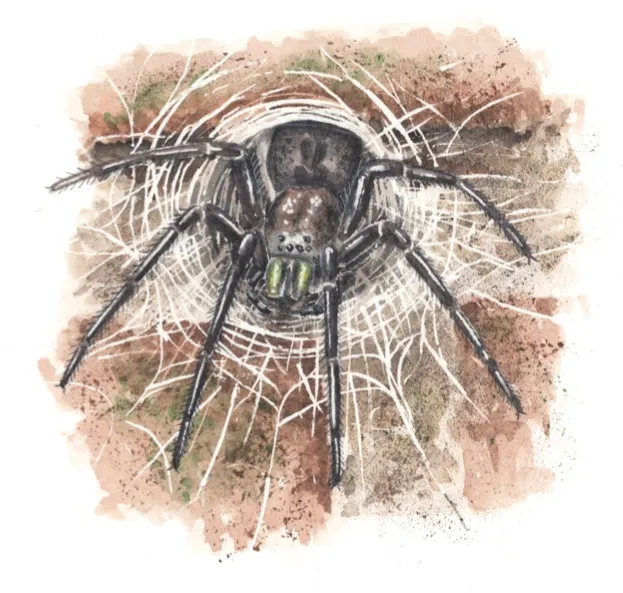
Ivy-leaved toadflax (Cymbalaria muralis)
Tiny flowers and fleshy foliage on trailing stems. After flowering, stalks grow into dark cracks to bury seeds.
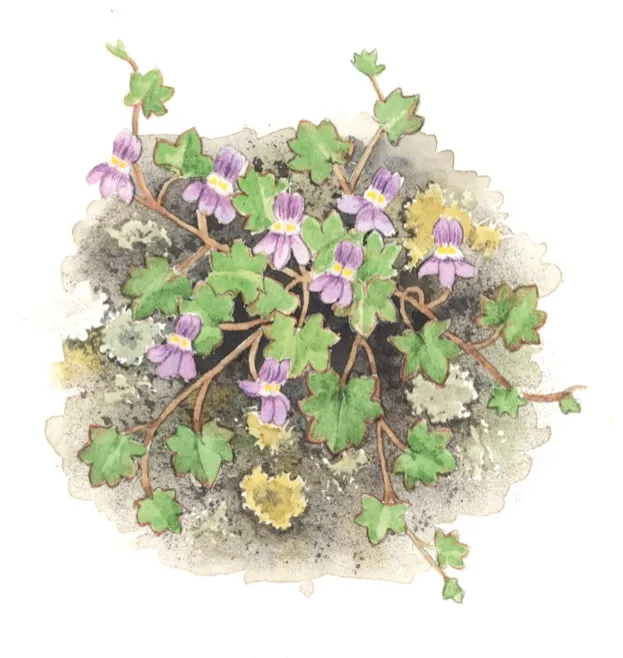
Yellow corydalis (Pseudofumaria lutea)
Feathery leaves and sprays of yellow tubular flowers. A protein globule on each seed bribes ants to distribute.
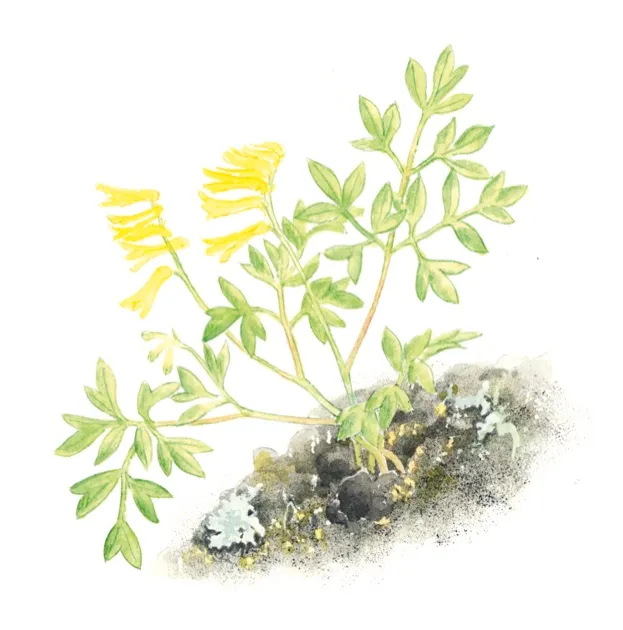
Reflexed stonecrop (Sedum rupestre)
Fleshy leaves and flattish heads of yellow flowers. Can survive in the driest locations on hardly any soil.
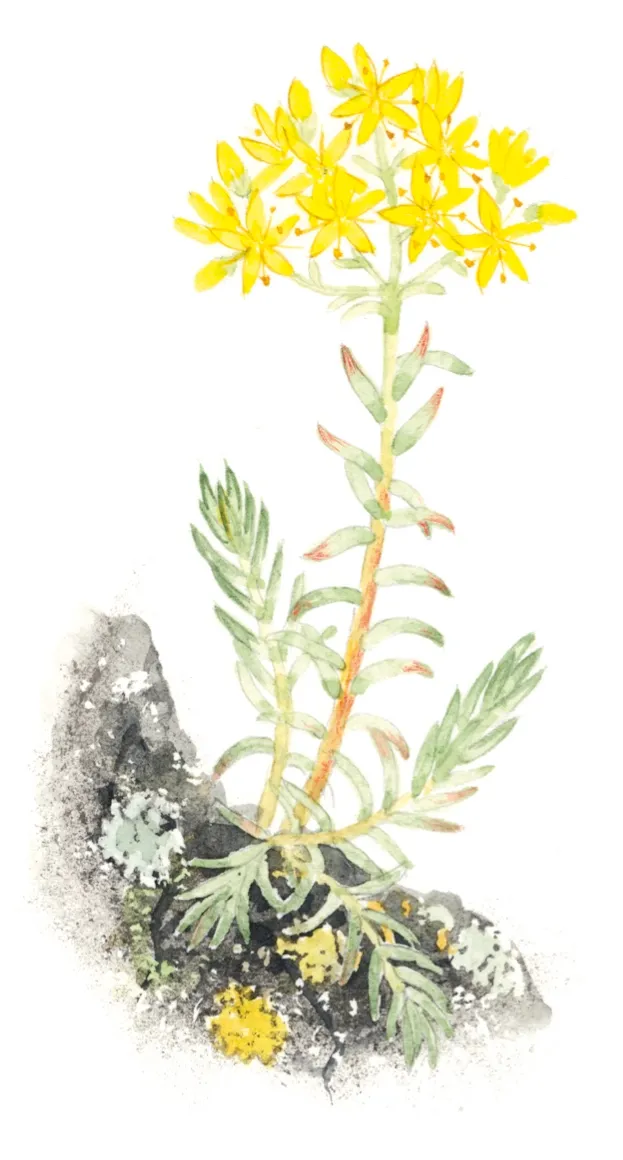
Grey cushion moss (Grimmia pulvinata)
Translucent leaf tips give a greyish, woolly appearance when dry. On wall tops and along mortar lines.
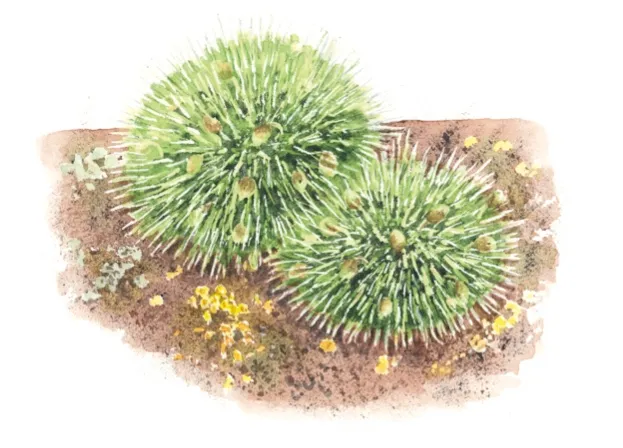
Anomalous bristle-moss (Orthotrichum anomalum)
Brown spore capsules are held on stalks above green leaves. On neutral or limey walls, but not acid ones.
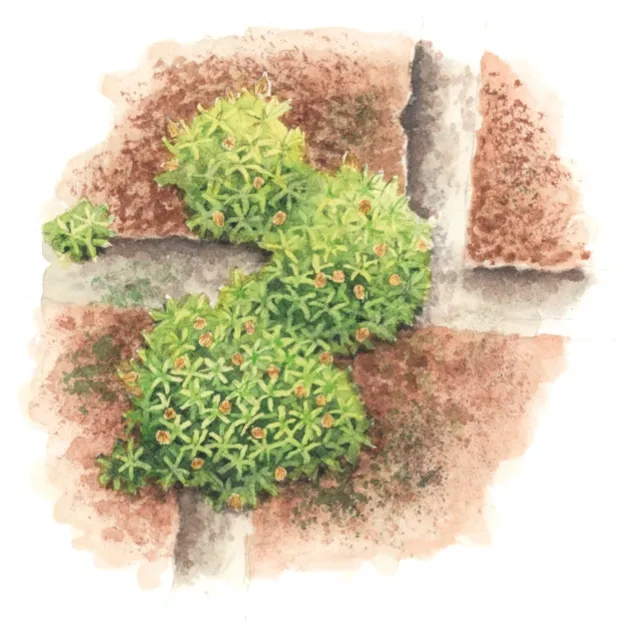
Salted shield lichen(Parmelia saxatilis)
Blue-grey fronds in loose rosettes. One of many leafy lichens found on upland walls, especially acid stone.
